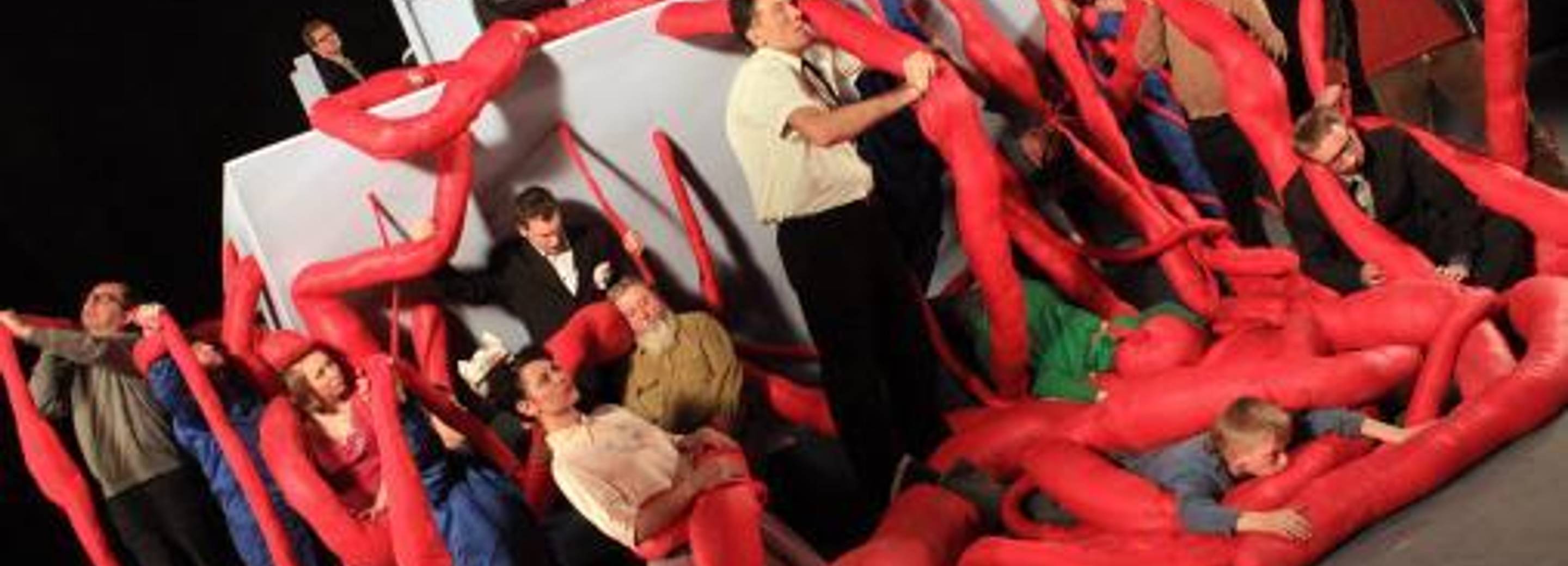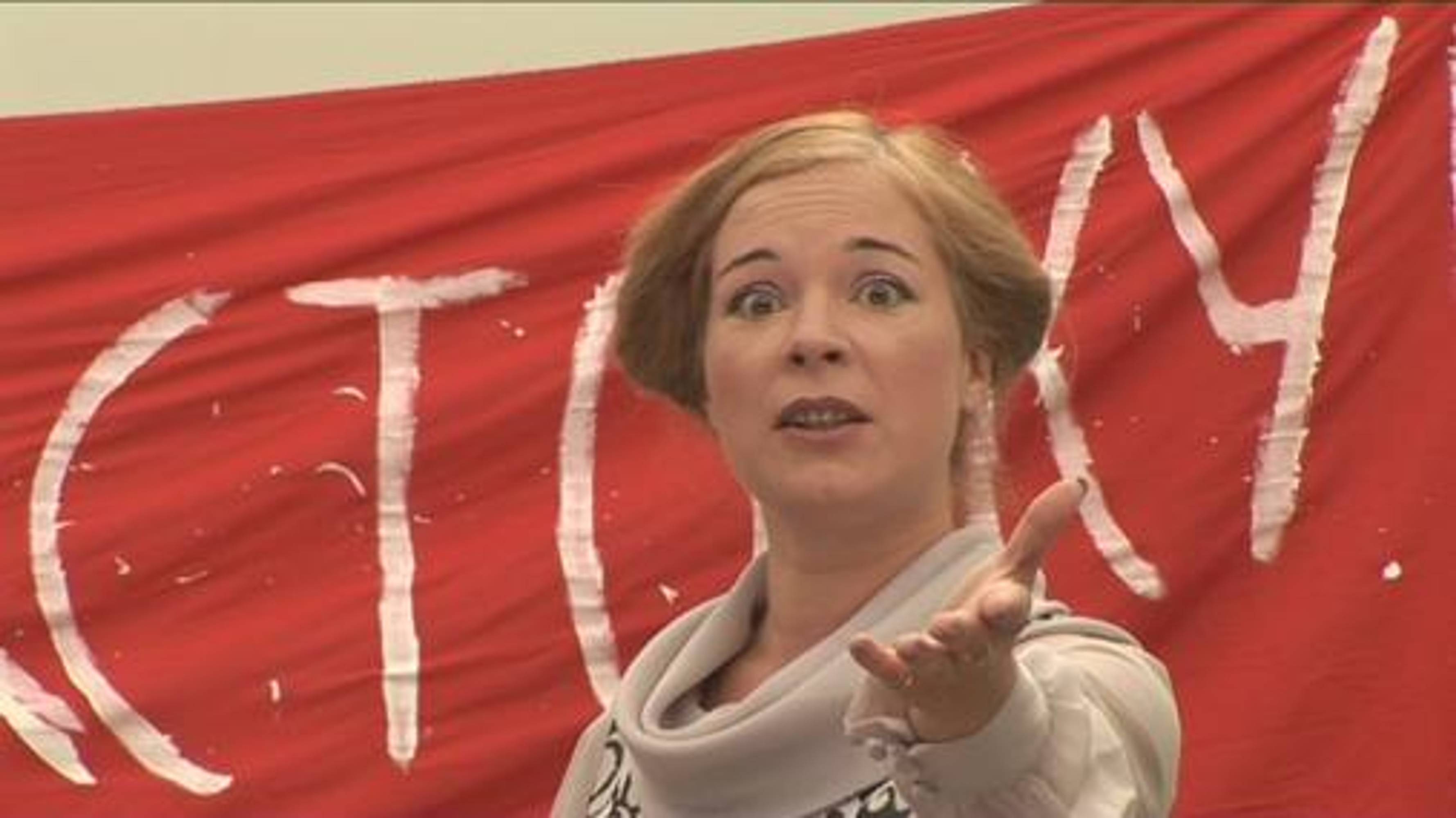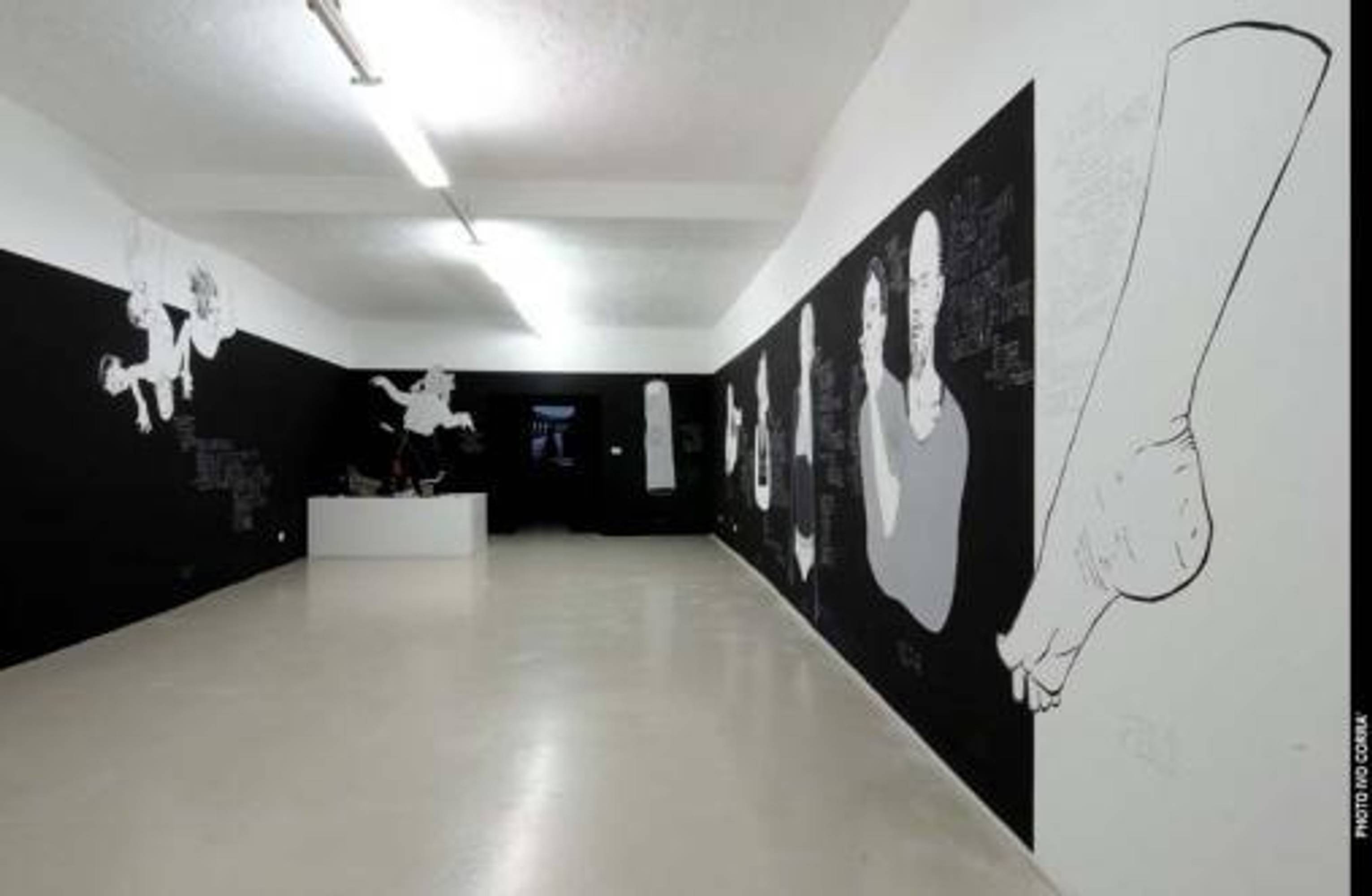CHTO DELAT?
Curated by Luigi Fassi
Composed of various individuals – artists, critics, philosophers and writers – the St. Petersburg art collective Chto delat? is conceived by its members as a polyhedral platform for cultural and political reflection, halfway between activism and artistic production. With a critical yet practical orientation and by drawing inspiration from the didactic theatre of Bertolt Brecht, the work of Chto delat? attempts to stimulate individual responsibility within the spectator by creating a space for the incitement and reasoning of social change by means of the use of satirical devices similar to the dimensions of the grotesque and the parody. In an innovative way, Chto delat? elaborates on the political tradition of reflecting the relation between praxis and theory – a typical theoretical approach of the European left. Thus, Chto delat? operates inside an artistically hybrid territory, promoting the collective values of a new form of social aggregation under the sign of civil progressivism.
For their first show in Italy, Chto delat? will present a trilogy of works composed within the last two years and focused predominantly on Russian society in the post-Perestroika era. This era has been characterised by the political and civil crisis of the surrounding social structures, which disintegrated due to the pressure from emergent bureaucratic and ideological structures of the authoritarian new capitalist order which is still dominating the entire country.
The definition of the three works as Songspiel refers back to the musical theatre of Bertolt Brecht and Kurt Weill, regarded as an artistic form designed to approximate popular music forms within theatre in order to transmit messages and political ideas to a broader and increasingly diverse audience. Perestroika Songspiel (2008), Partisans Songspiel (2009) and Tower Songspiel (2010) are characterised by their mixing of performance and narration styles deriving from different traditions. The role of the choir within the classical tragedy, acting as an omniscient voice that evokes comparisons several times within the dramatic development, is introduced by the artists as an approach close to the methodology of critical rigour proposed by the theatre in accordance with the maxims of Bertolt Brecht. They unfold as an accentuated presence of forms which are not only close to anti-realistic Expressionism, but also to the grotesque parody, in order to delineate a nearly allegoric sense of the events being represented.
Perestroika Songspiel interrogates the cultural heritage of the Perestroika period. It displays the political and civil failure of the precise historic moment which immediately follows the liberating euphoria of popular mobilization. The different social groups of the country, businessmen, revolutionaries, conservatives and progressives differ radically concerning the direction of the country, and the work unveils with irony and an element of caricature the difficulty of building a shared political project.
Partisans Songspiel deals with the theme of social reconstruction and policy in contemporary Belgrade, a city marked by radical conflicts and by the difficulties within instauring a process of real democratization of the existing social structure. The country’s neo-capitalism oppresses the most disadvantaged classes, such as workers, Romanies, lesbians and war veterans, to which the work offers individual space within a visibly symbolic formalization. The satirical moment within Tower Songspiel (co-produced by ar/ge kunst Galerie Museum) is addressed instead to the public debate raised in Saint Petersburg by the construction of the Gazprom skyscraper, headquarters of the company that owns a monopoly on all energy development throughout the entire country. By means of stereotypes and satirical effects, Chto delat? dramatizes a meeting of the leaders of both the company and the city, with each group concerned with developing strategies of corruption and populism with the aim of achieving a consensus among all social groups regarding the construction of the tower.
The trilogy constitutes in its entirety a space of dissonance, intended to evoke and develop in the spectator the desire to participate and to investigate further, as well as to create a political reaction by dint of the opposing powers of individual and collective reason.
A second video, Builders (2004), as well as a kaleidoscope of wall drawings accompany the trilogy within the show. Newspapers and graphic inserts on the walls of the exhibition space create a unified space, where diverse expressive modalities of dissent and critical resistance between past and present can find cohesion and choral unison.



